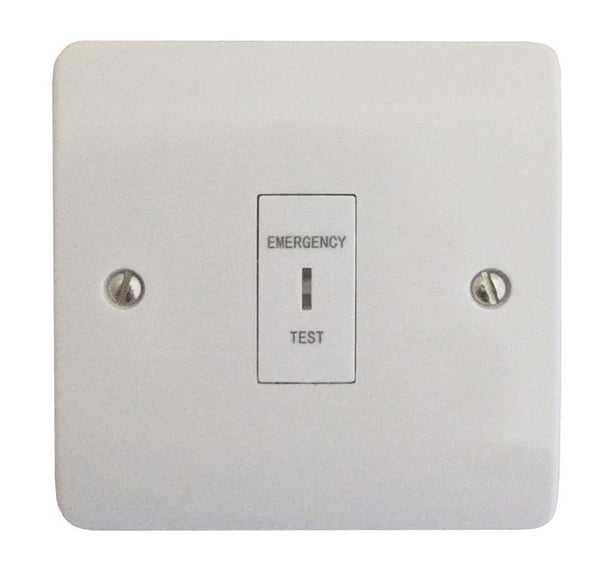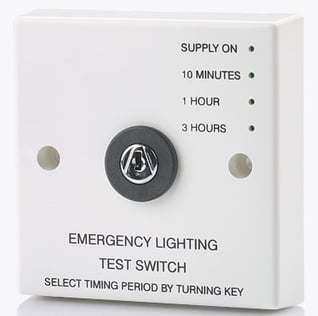
Spirit offers a complete LED retrofit service for commercial clients with 100+ light fittings. All lights are upgraded to the latest LED technology, including like-for-like emergency lighting replacements. The best part is it's provided with no upfront cost:
Our free Emergency Lighting Guide gives a very good overview of emergency lighting. You may also wish to visit these pages on our website:
Emergency lighting needs to be checked on a regular basis and maintained according to manufacturer’s recommendations. Any repairs or remedial work must be carried out within a reasonable time and all changes must be recorded.
Anecdotal evidence suggests that a significant proportion of organisations do not adequately test and maintain their emergency lighting. This is partly because standards have changed (BS 5266 was updated in 2016) and the relevant people may be behind the times. But it’s also because the three hour test required is rather laborious and labour intensive, and therefore expensive.
Installing the right test mechanism at the outset is fundamental.
Where there is a central power supply, carry out a visual inspection of indicators to ensure the system is in a ready condition
Functional operation should be checked at least every month by a competent person. Simulate a failure of the normal lighting supply for sufficient time to allow all luminaires to be checked for correct operation. Check each luminaire for any obvious signs of damage or deterioration, including the cleanliness and general condition of lenses and diffusers.
Similar to the monthly test, but a failure of the normal lighting supply is simulated for the full emergency duration (typically one or three hours) to ensure emergency lights are able to function for the full duration. Note that the batteries will be discharged as a result of this test such that the emergency lighting system will not function fully until the batteries have had time to discharge. One of the following precautions should therefore be taken during the full rated duration tests:
After the test the indicator lights should be checked to ensure that normal supply has been restored. The red or green LED, which identifies an emergency light unit, should be illuminated on completion of the test, confirming that mains power is restored and is charging the lighting battery packs.
Lighting units that fail to illuminate clearly or brightly, have blackened bulbs or tubes, or do not maintain luminance for the required length of time should repaired as soon as possible. In the event of failure of any parts of the system, a competent person should be used to repair the fault. Alternative safety procedures should be introduced until the repair is complete and the system has been re-tested satisfactorily. The responsible person for the building should decide on the appropriate action to be taken for their premises to maintain occupants’ safety during this time.
The results of all tests, and details of the lights themselves should be recorded in the log book.
Specifically the log book is used to record:
The standard procedure for manual testing of self-contained lumuinaires is to install a test key switch as part of the lighting circuit (image above). A small ‘fish tailed’ key is then inserted into the test switch to simulate failure in the mains supply to the circuit.
A more sophisticated version of this is the timed key test switch (below). The The key is used to interrupt the mains supply for a pre-programmed period of time for testing. After the test period, the supply is reinstated automatically, so that there is no need to reinstate manually and there is no risk of depleting the batteries by leaving them connected for long periods.
In an ideal world, some form of self-testing would be installed at the outset, particularly on large installations.
There are three main forms of self-test system, whose classification and type reference indicate the mode of operation. These are as follows:
This is the simplest ‘stand-alone’ type of automatic testing, which only works for self-contained luminaires with their own emergency batteries – it is not for systems that use a central battery or generator. The self-test emergency luminaire checks itself to ensure that the fitting is fully operational, and the result of the automatic test is usually indicated through a single bi-colour LED on luminaires. The luminaires typically initiate an emergency functional test every 28 days and a duration test every 26 weeks. They are easy to install and there is no need for the key switch mentioned above.
Anyone near an emergency luminaire indicating a fault can report this to the ‘responsible person’. However, the responsible person will still need to make monthly visual checks to monitor any fault indication and to ensure that emergency luminaires are un-obscured and able to carry out their intended function.
It is important to ensure that adjacent luminaires do not test at the same time, which would leave an area without emergency cover whilst the batteries are recharging. All emergency luminaires that use stand-alone automatic testing need to find a way around this problem, such as delaying the testing of alternate luminaires.
Note that the results of tests carried out using stand-alone automatic test emergency lighting still need to be recorded manually into a logbook. However, the person recording information does not need to put installations into test and wait to see whether the rated discharge duration is achieved and need not be electrically qualified. Qualified personnel are only needed to rectify faults and re-set systems.
It is still possible to run a manual test on the self-test emergency lighting units.
To avoid having to record test results by hand, there are a range of automatic test emergency lighting systems which connect emergency luminaires to a remote control panel where the results are collected centrally, either via data cabling or wireless link.
More advanced systems allow the programming of tests from a control panel or via a connection to a computer on which a visual representation of the installation can be displayed, showing luminaires in test, and those exhibiting faults.
These systems obviously make maintenance much more efficient. The payback time for an automatic test system is typically two to four years; thus installing an automatic emergency lighting testing system is definitely worth considering.
There are products available to upgrade your test system. The options are as follows:
If you would like to learn more about emergency lighting, download our free guide:
Copyright © Spirit Energy 2025 · info@spiritenergy.co.uk · 0118 951 4490
Jobs and Careers
Interested in joining the Spirit team? Email jobs@spiritenergy.co.uk
Spirit House, 25 Albury Close, Reading, RG30 1BD
(Location formerly known as 44 Portman Road, Reading, RG30 1EA)
Spirit Energy is the trading name of Spirit Solar Ltd · UK Company Number 07138647
Although care is taken to ensure that the information on our website (www.spiritenergy.co.uk) and any guides, calculators or checklists provided by us, electronically or otherwise, are accurate and up-to-date, we cannot accept any responsibility for mistakes or omissions. We enter into no express or implied conditions, warranties, terms or representations regarding the quality, accuracy or completeness of the information. We exclude to the extent lawfully permitted all liability for loss or damage, whether direct, indirect or consequential arising out of your use of our website or any guides, calculators or checklists provided by us, or from any information or omission contained in our website or any guides, calculators or checklists provided by us.